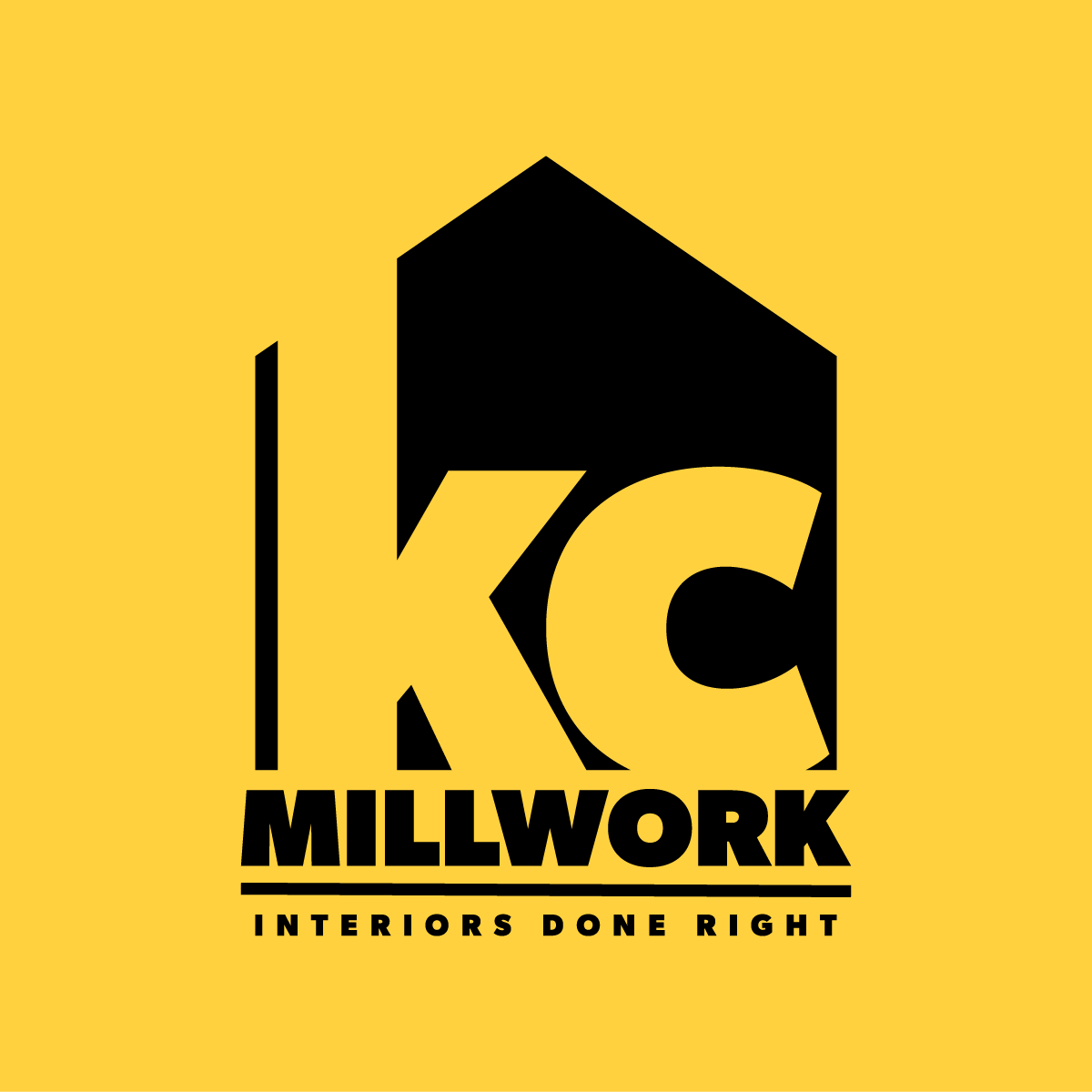
Logo redesign for a family-owned construction company, aimed at creating a unified and professional brand identity. Inspired by industry leaders like DeWalt and CAT, the final design balances boldness with clarity. This project also included a full brand guideline, with upcoming extensions into web and apparel design.
View Case Study
With an emphasis on research, the project explored the roots of literacy decline and the impact of shifting teaching methods. Created under a tight four-week timeline, the final design bridges traditional instruction with digital tools to support K–3 readers. Includes in-depth research, wireframes, and a high-fidelity prototype—completed while balancing two jobs.
View Case Study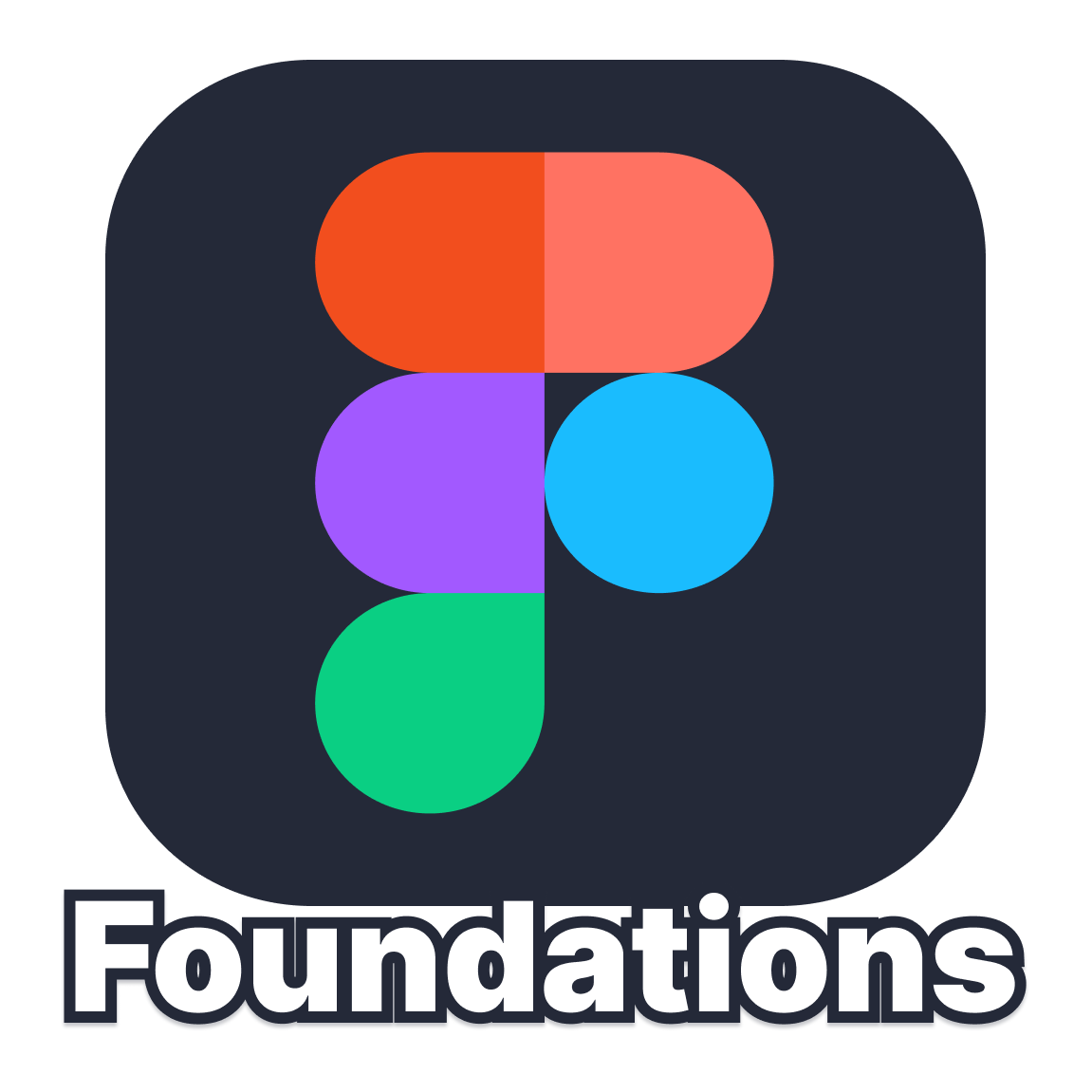
A collection of three projects that showcase my growth as a designer—from my very first steps in Figma to more advanced, end-to-end design challenges. Each case study highlights a different stage in my journey, from foundational UI work to research-driven problem solving and rapid prototyping. Together, they reflect how I’ve built my skills, developed my process, and learned to balance creativity with usability.
View Case StudyHi! I’m a musician and music teacher transitioning into the world of design. My background in music has given me a deep appreciation for rhythm, composition, and storytelling—elements I now apply to visual design.
I come from a creative background that blends design with hands-on experience working with people. Before transitioning into design, I taught in the classroom and ran my own private piano studio, which gave me a strong foundation in communication and collaboration. I’ve also worked as a barista and in customer service, where I learned to problem-solve in real time and connect with people from all walks of life. These experiences continue to inform how I approach design and build thoughtful, functional work.
Outside of design, I love spending time outdoors, hanging out with friends, snowboarding in the winter, being with family, and occasionally indulging in a good comedy show—those are the things that keep me grounded and inspired.
I specialize in digital media, layout, and user experience, focusing on creating compelling and functional designs. My experience primarily comes from school projects, but I’m eager to grow, refine my skills, and bring creative ideas to life.

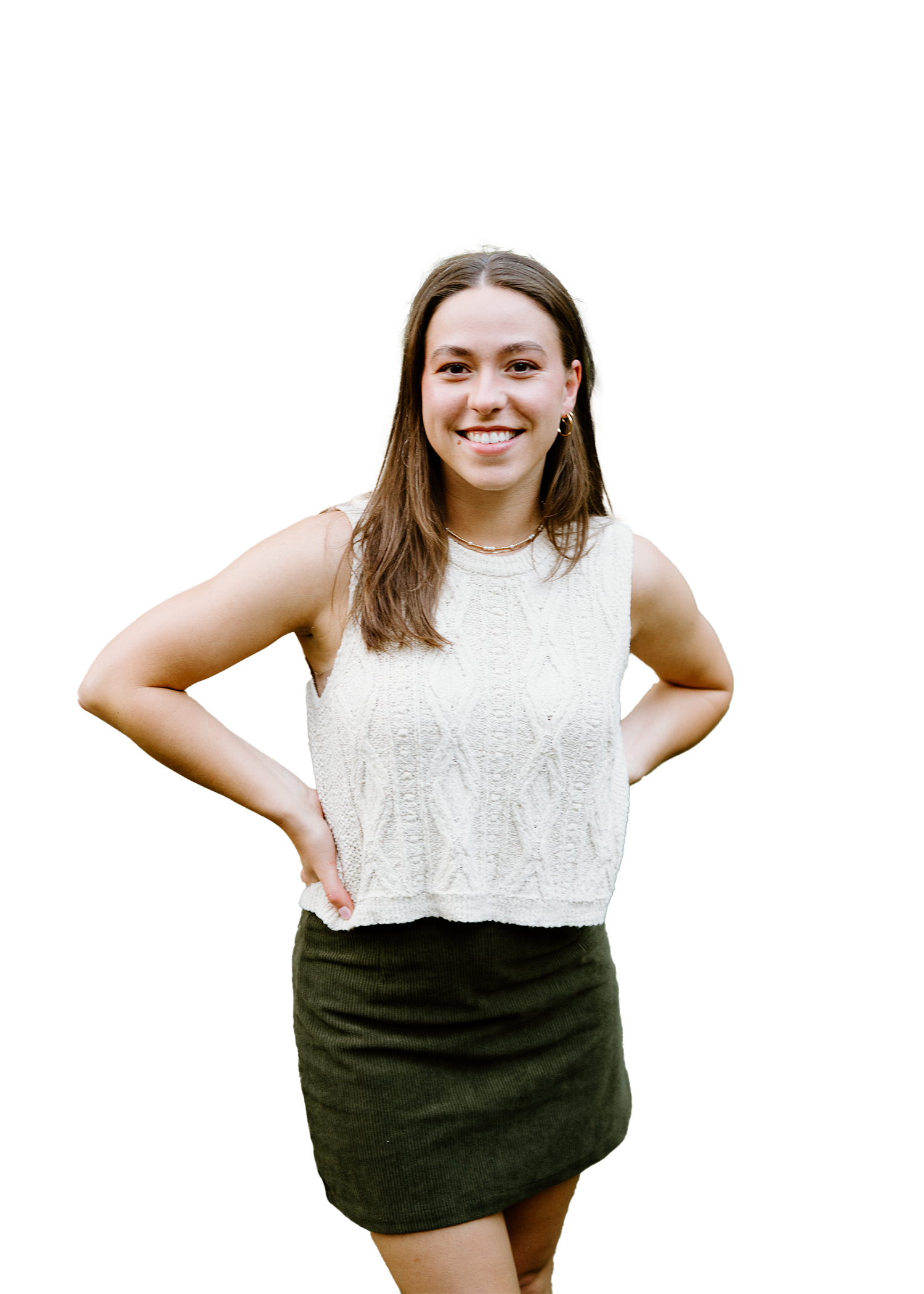
This project was a logo redesign for a family-owned construction company with whom I have a personal connection. Their previous logo had been used inconsistently across platforms, with variations in typography and color that diluted their brand presence. I offered to redesign their logo to help create a unified, professional identity that would feel both classic and memorable, aligning with their reputation for quality craftsmanship and longstanding community trust.

I began the redesign process with a sketching brain dump in my journal, letting ideas flow freely to get concepts out of my head and into something tangible. At the same time, I researched different types of logos, studying how construction companies and adjacent industries approached their visual identities. I gathered inspiration online using platforms like Pinterest and paid close attention to logos in my local area, observing how designers incorporated stylistic techniques such as geometric shapes, strong typography, and classic color palettes to communicate reliability and professionalism.
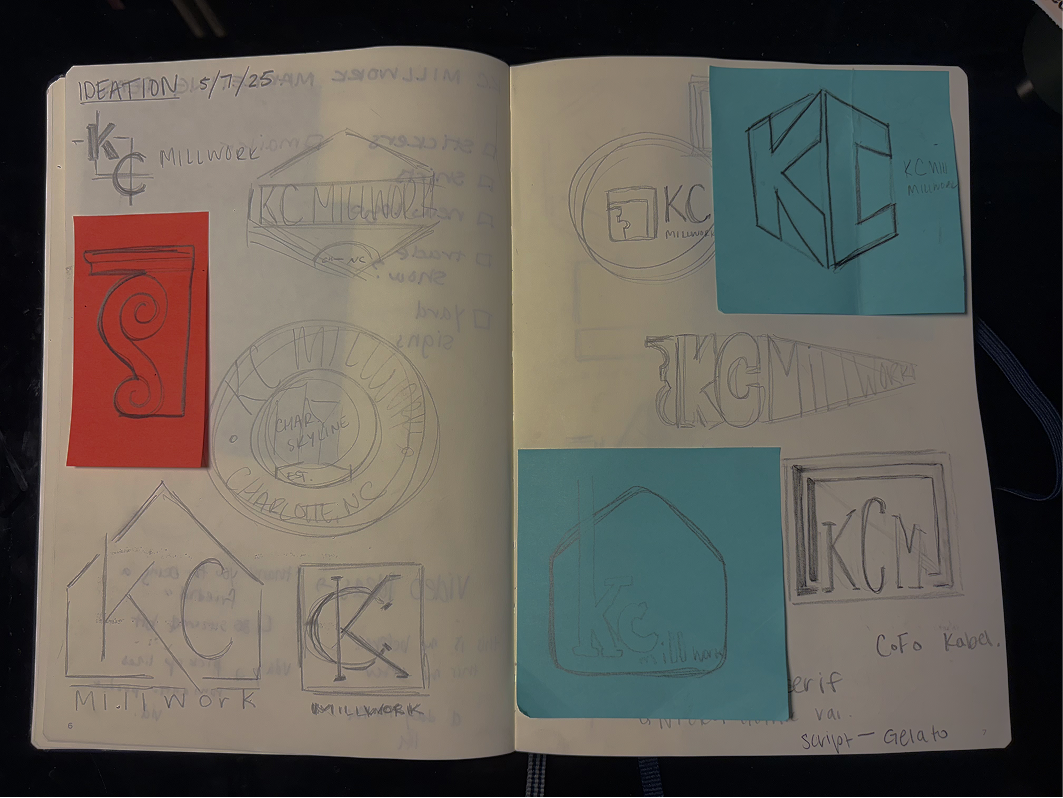
This initial sketching phase helped me generate a wide range of directions before narrowing down concepts that felt aligned with the company’s goals of appearing classic and memorable. From there, I digitized select sketches and began refining the designs further in Illustrator. After the narrowing down several ideas that were more concrete, I sent over a PDF with various rough drafts for the company to look through. Each idea included a small blurb about what it was trying to convey.
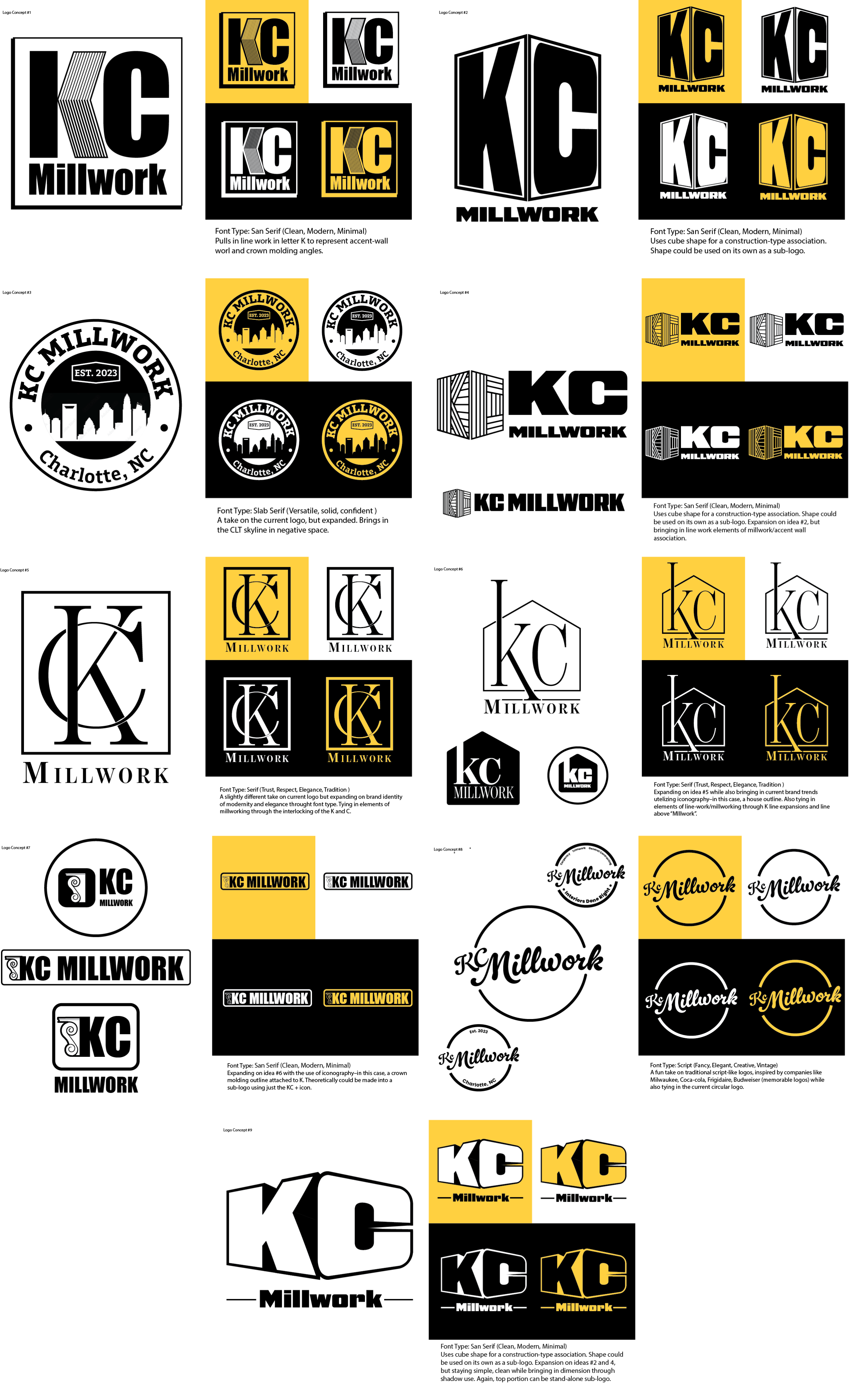
After sending out my initial rough ideas, the company chose concept number six as a starting point to refine further. Their feedback included specific aspects they liked as well as preferences for adjustments, which gave me clear direction for the next iteration. We scheduled a FaceTime session where I shared updated concepts and explored options together in real time. Through this collaborative process, we were able to completely narrow down the final look. I then solidified a brand guideline package for them, which included the finalized primary logo, wordmark, sublogo, color palette, and typography to ensure consistent application across all their platforms and materials moving forward.
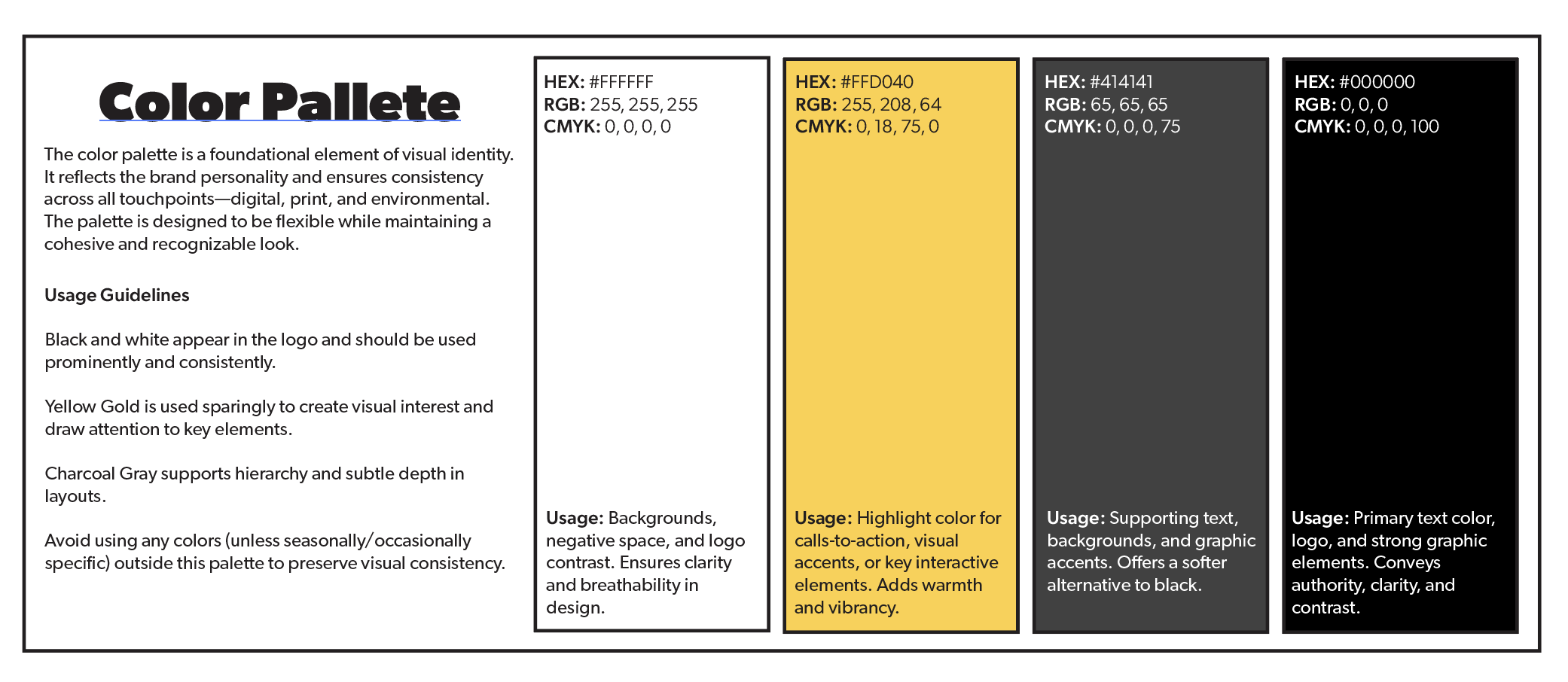
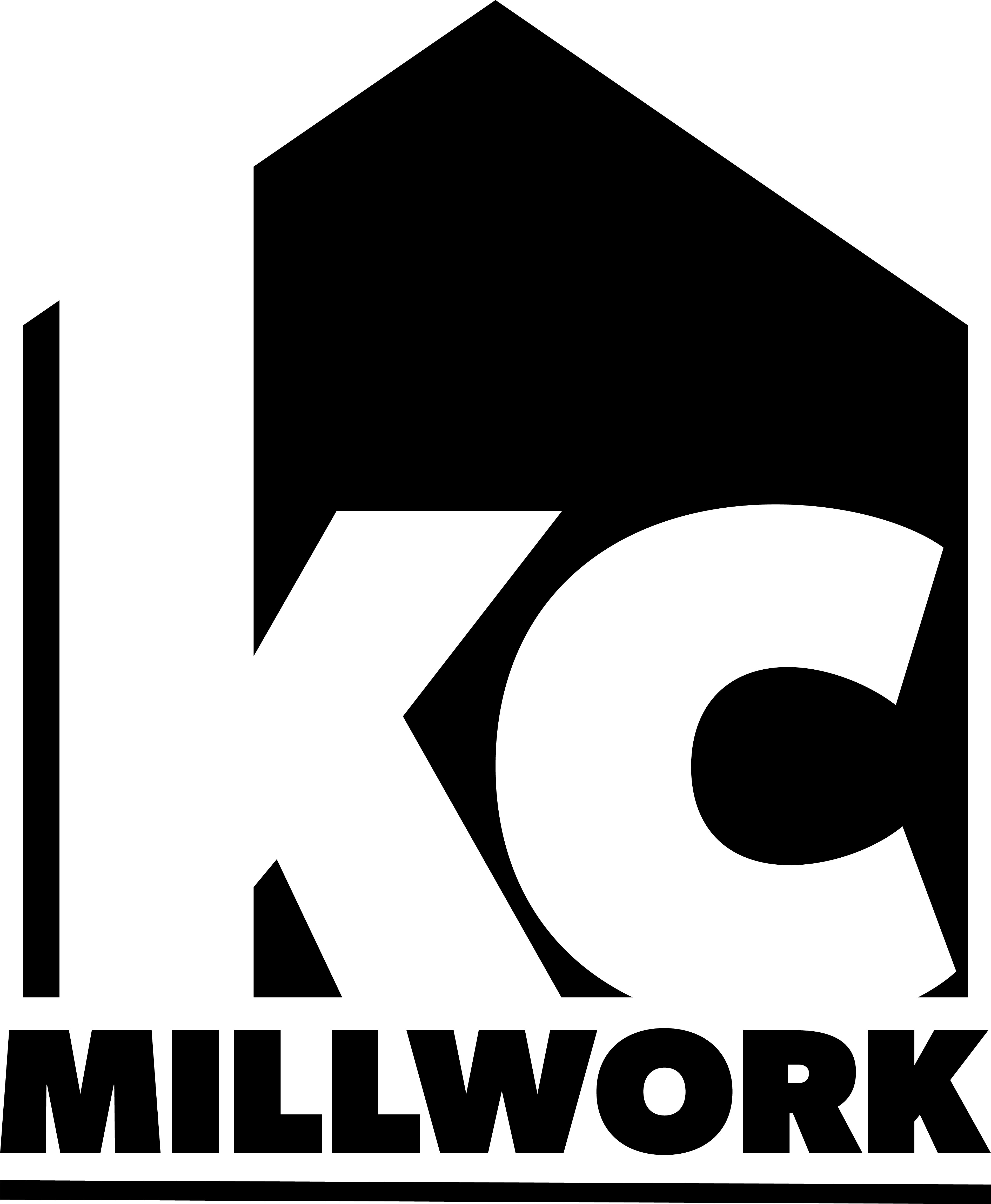

The final product drew inspiration from well-known construction brands like DeWalt, Milwaukee, CAT, and Lowe’s, incorporating strong, bold typography and clear, recognizable shapes to communicate trust and durability. With the new brand identity in place, our next steps will include redesigning the company website to reflect their updated logo and style, as well as creating a branded summer work shirt for the team. These additions will further strengthen their professional presence both online and on job sites.
Creating a cohesive brand image was a completely new experience for me, and it became an invaluable learning process—especially in learning to lay aside my own preferences and ideas at times to focus on what resonated most with the client. This project strengthened my ability to balance design expertise with client collaboration to produce a final product that truly served their goals.

For my capstone project, I designed a mobile app focused on supporting early literacy development in young readers. The goal was to create a tool that not only engages children but also empowers caregivers and educators with meaningful insights. Drawing on research in human-centered design and educational best practices, the project focused on accessibility, intuitive navigation, and playful interaction to make reading both fun and effective.
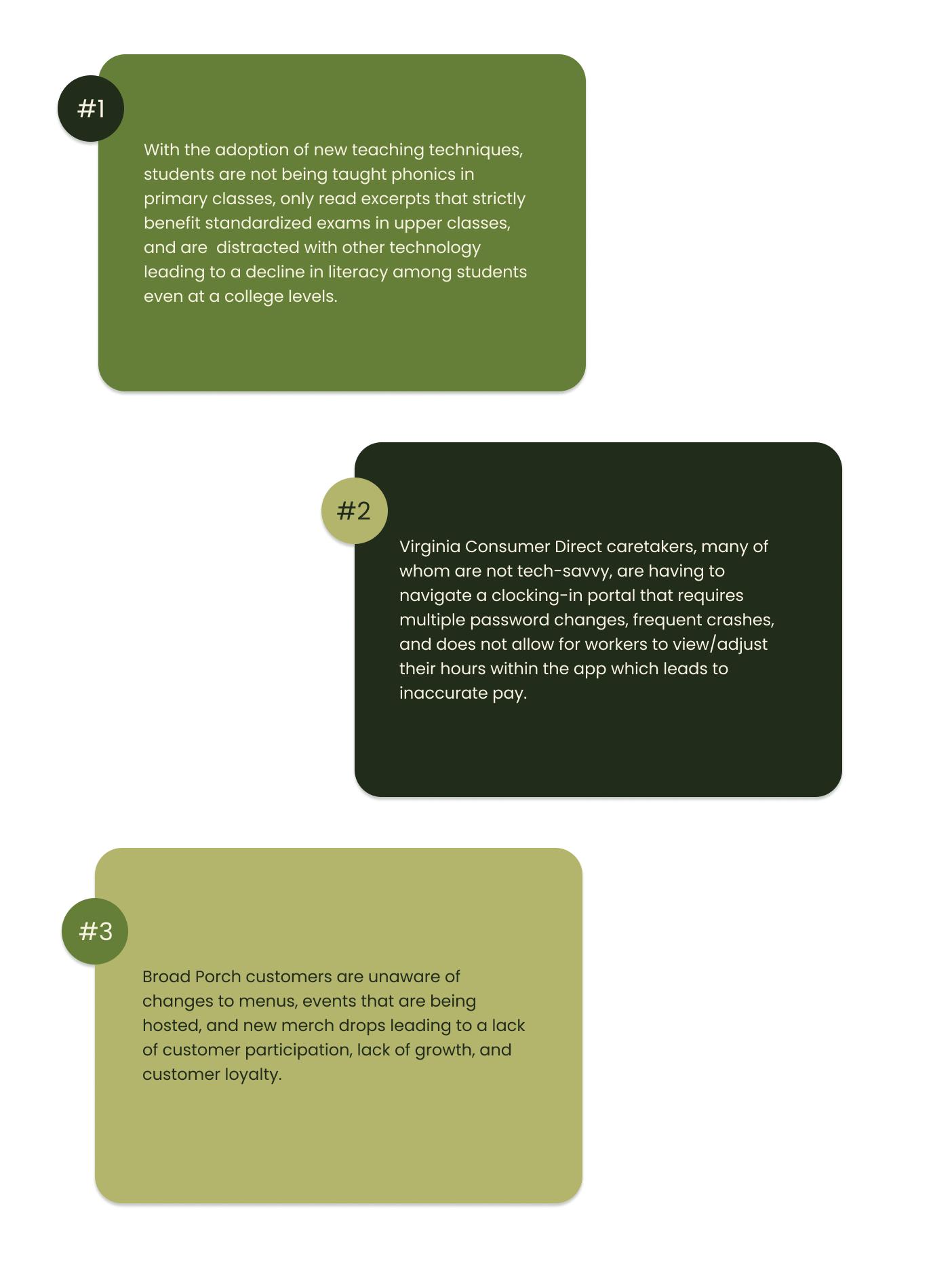
To kick off my capstone, I had to pitch three problem ideas with criteria, problem statements, and working titles. I chose topics I had personal experience with—practical, meaningful stuff that could do some good. I ended up diving into the growing rates of illiteracy in the U.S.—a topic that stuck with me after watching a YouTube essay by an English professor. The more I looked into it, the more it resonated, especially given my background working with K–3 students in reading-focused classrooms.
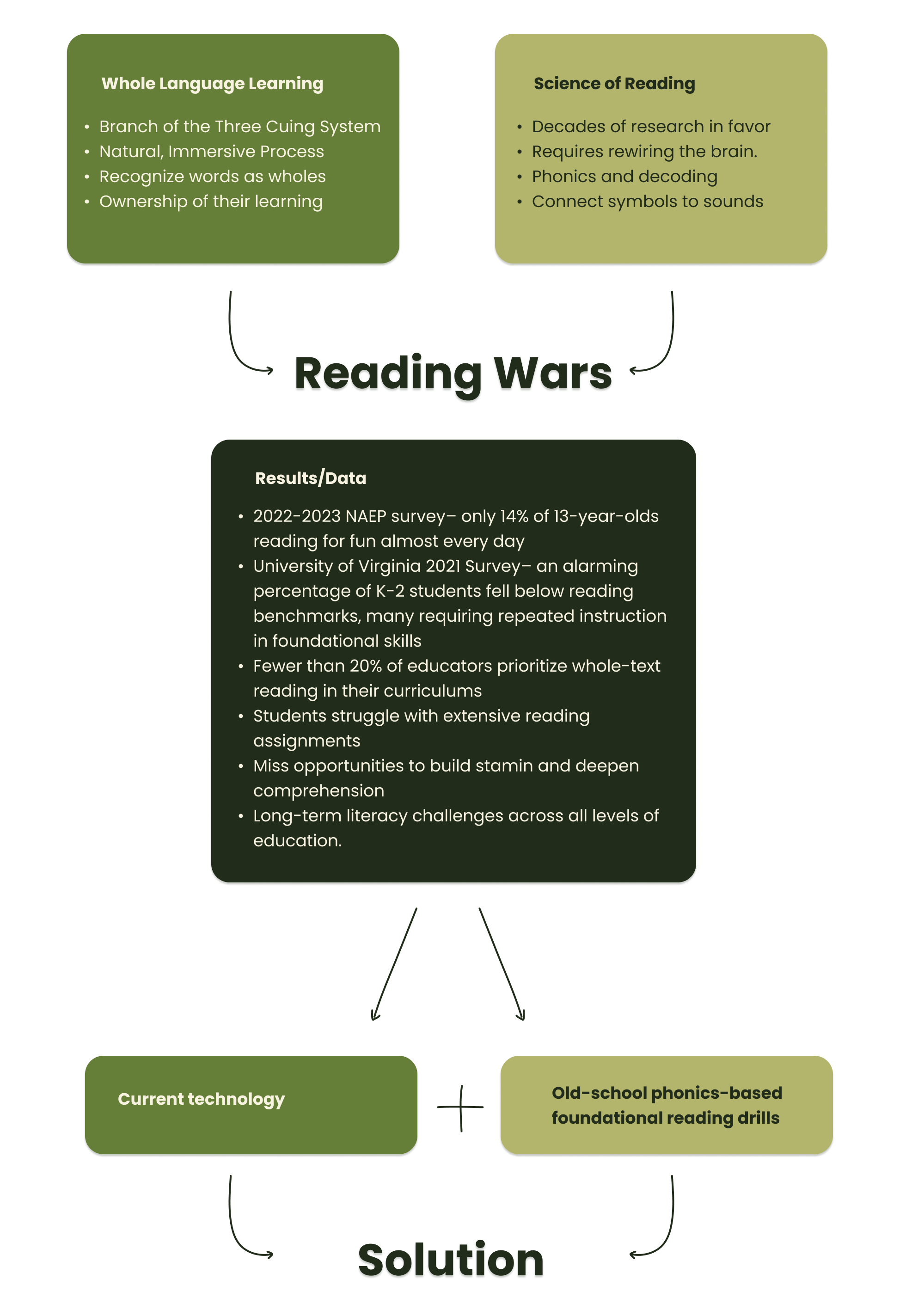
As part of my research, I put together a 20-page report and literature review that uncovered a strong link between early reading strategies and long-term literacy. A shift in the early 2000s from phonics to whole-language instruction seemed to impact how kids learn to read—but both methods have their pros and cons. That led me to design a classroom resource that leans into phonics-based learning while gamifying the process. With tech becoming a bigger part of classrooms, I wanted to create something that blends traditional methods with digital tools in a way that feels natural and supportive.
The majority of my time on this project was spent researching and writing the report, so when it came to wireframing and prototyping, I had to move quickly.
To start, I analyzed existing phonics platforms, games, and traditional paper-based learning strategies to get a sense of how I wanted to structure my design. I sketched out ideas in my notebook to explore different layouts before creating a low-fidelity wireframe in Figma.
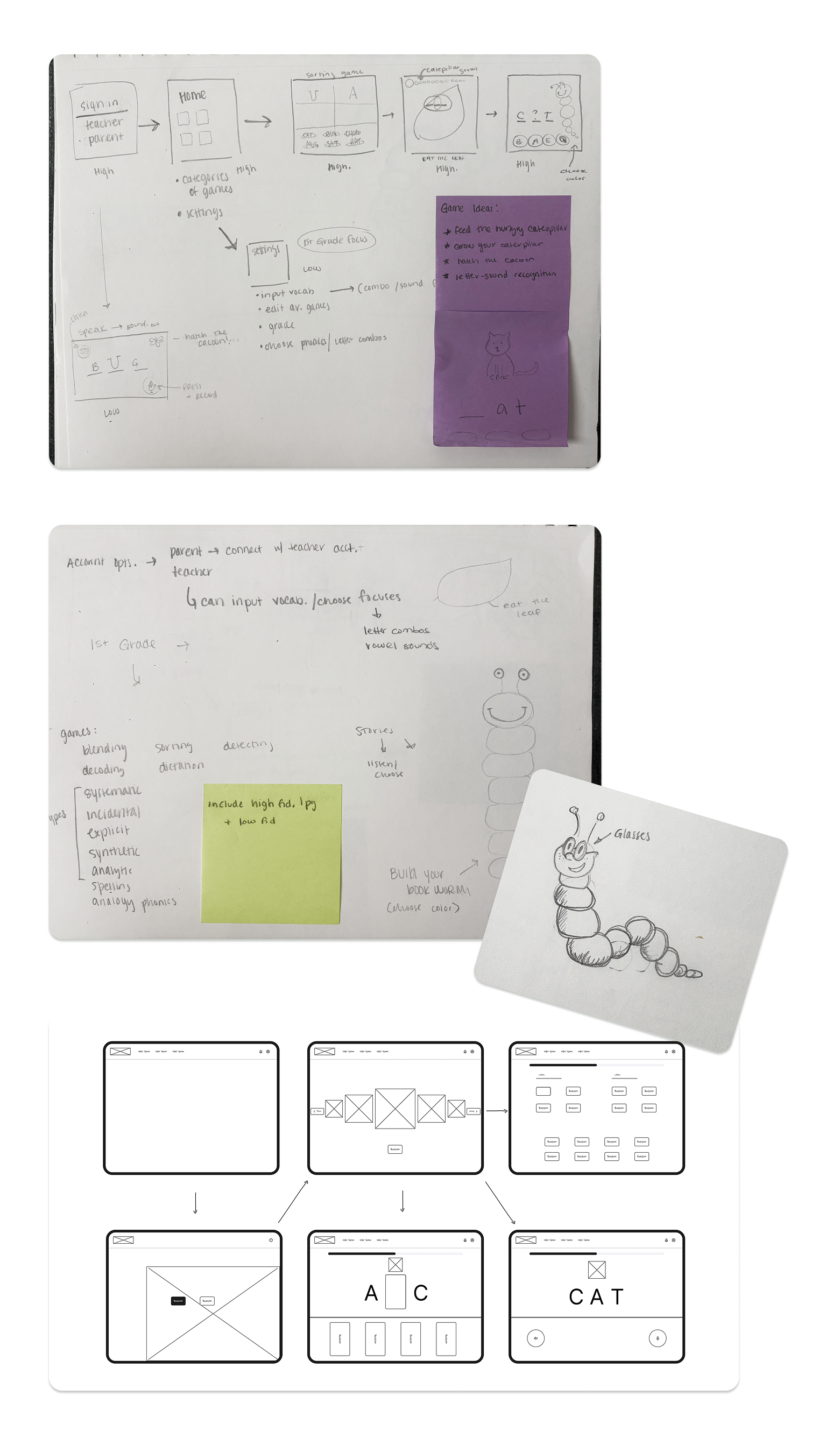
Once I had my low-fidelity wireframe complete, I scoured the web and Pinterest for UI inspiration. I wanted the style to be fun and playful without feeling overstimulating for young students. I created a moodboard and sketched out some rough ideas for the mascot, ultimately choosing a caterpillar or worm to play off the traditional idea of a bookworm.
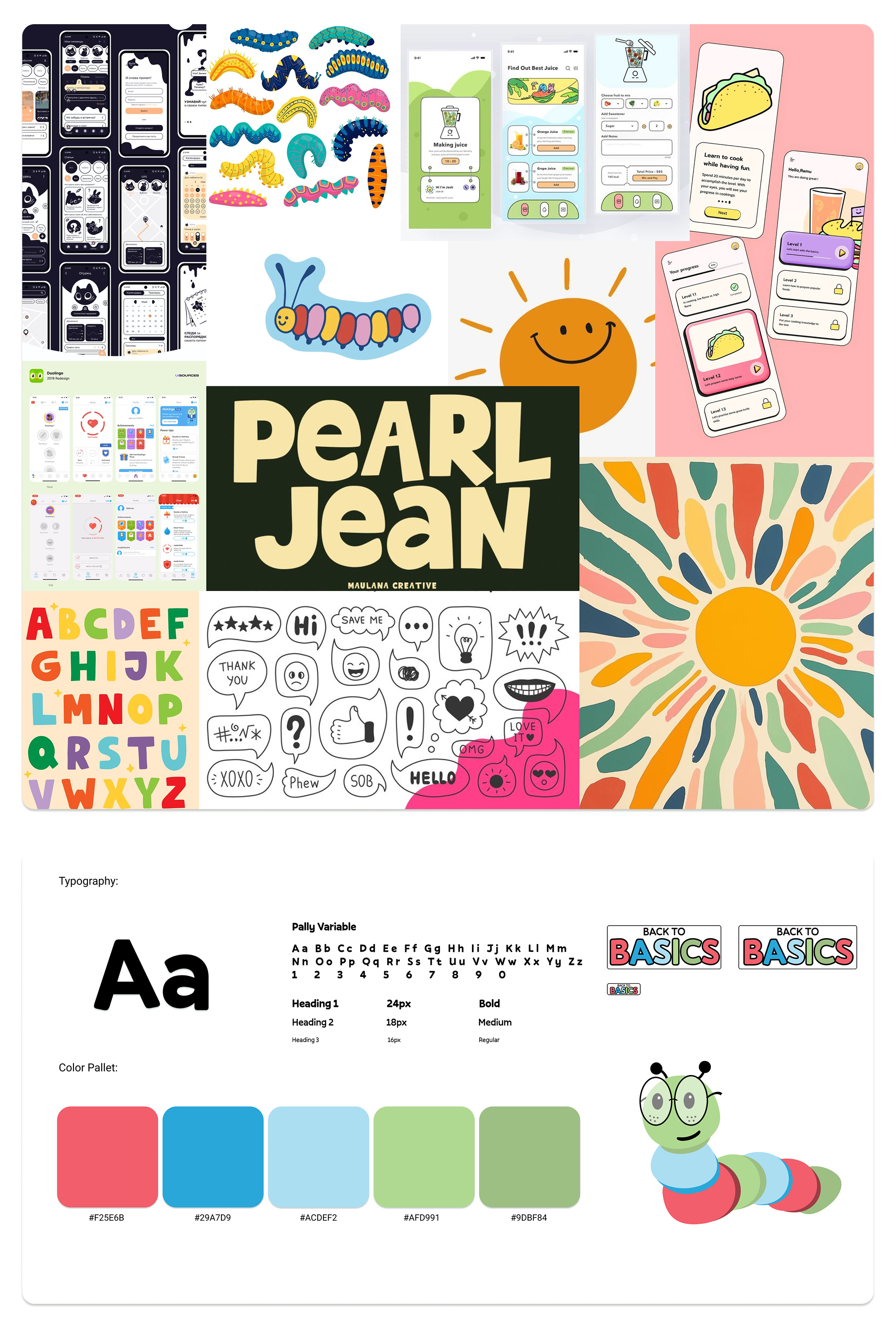
Finally, I put together a style guide and incorporated it into a high-fidelity design in Figma. I added elements like placing letter blocks into designated areas, a trajectory tracker, and a rough concept for rewards when students answered correctly. My final prototype included interactive, animated features that are ready to be used for testing.

For the testing portion of my project, I used Google Forms to create a simple, easy-to-share questionnaire for participants. I gathered feedback by reaching out to fellow teachers and parents of young students. The responses highlighted issues with wording and directions, practical privacy concerns, and potential development costs, such as creating custom artwork, that I needed to address for my final submission.
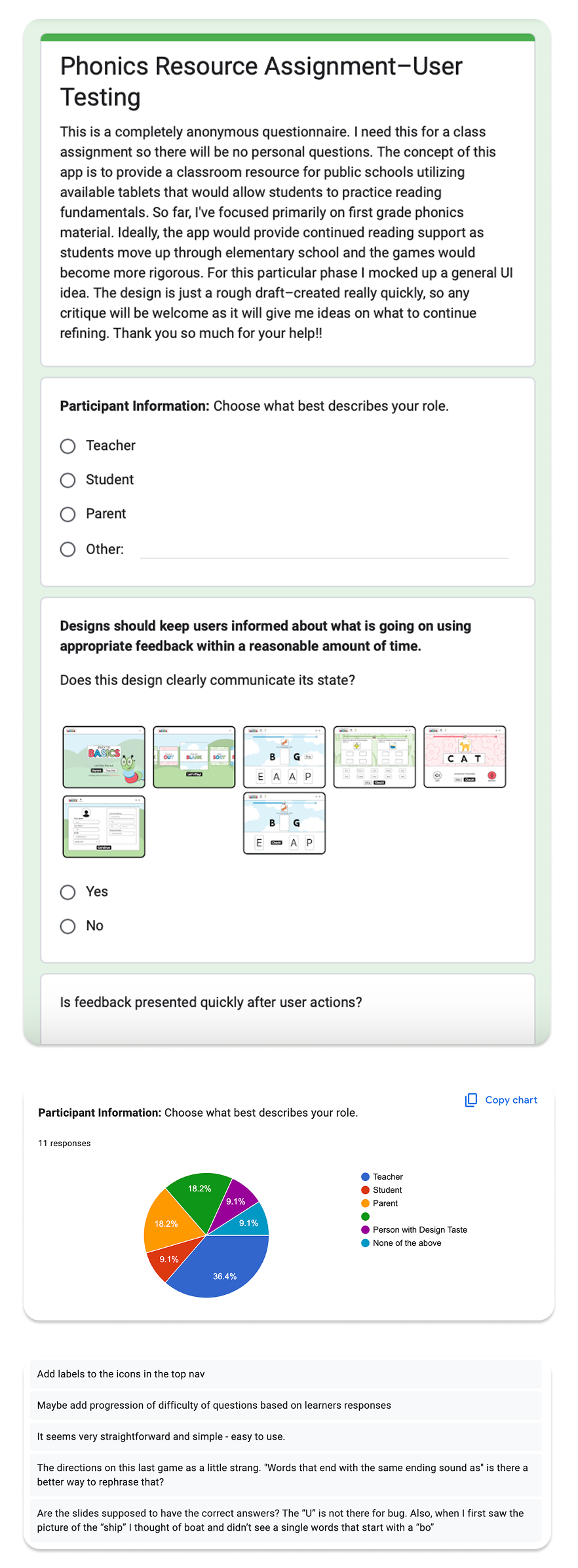
After gathering feedback, I addressed the identified issues in my final submission. I clarified the wording in the directions to avoid student confusion, added listening buttons for those who struggle with reading, removed the voice-recording feature to prevent privacy concerns, and used AI-generated images instead of relying on costly custom artwork.
One of the biggest challenges with this project was the delay in getting started. Due to limited communication with my professor, my topic wasn’t approved until three weeks into the course, which left me with just four weeks to complete everything—from research to prototyping. It was definitely a time crunch, especially while also teaching and working another job, but I’m proud of what I was able to pull off under pressure.
https://www.figma.com/proto/8INfuXDCSjO0Nantr5r9Wu/Capstone-Project?page-id=0%3A1&team_id=1247671696257051280&node-id=115-13180&starting-point-node-id=115%3A13102&t=HCgaqhZ6gPvxPdlI-1